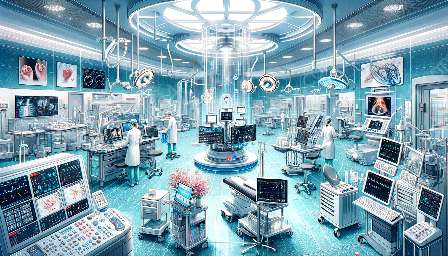Biomechanical principles play a crucial role in the design of cardiovascular medical devices, shaping innovations that enhance patient care and treatment outcomes. This comprehensive topic cluster explores the integration of biomechanics and medical devices, highlighting the application of biomechanical concepts in the development of cutting-edge cardiovascular technologies.
Understanding Biomechanical Principles
Biomechanics is the study of the mechanical aspects of living organisms, including the application of principles from engineering and physics to understand biological systems. In the context of medical device design, biomechanical principles are utilized to analyze and optimize the performance of devices intended for cardiovascular interventions, such as stents, pacemakers, and artificial heart valves.
Biomechanics in Cardiovascular Device Development
The application of biomechanics in cardiovascular device development allows for the creation of devices that closely mimic the physiological functions of the cardiovascular system. By incorporating biomechanical principles, engineers and medical professionals can design devices that interact seamlessly with the body, minimizing potential complications and maximizing therapeutic efficacy.
Stress Analysis and Material Selection
Biomechanical principles guide the stress analysis and material selection processes essential for the design of cardiovascular medical devices. Engineers use biomechanical principles to predict stress distribution and performance under physiological conditions, ensuring that the selected materials exhibit the necessary mechanical properties for long-term compatibility with the cardiovascular environment.
Fluid Dynamics and Hemodynamics
The study of fluid dynamics and hemodynamics, integral aspects of biomechanics, substantially influences the design of cardiovascular medical devices. By considering the flow characteristics and pressure gradients within the cardiovascular system, engineers can optimize device geometries, enhancing blood flow patterns and minimizing the risk of thrombosis or hemolysis.
Advancing Treatment Modalities through Biomechanical Integration
The integration of biomechanical principles in cardiovascular medical device design fosters the advancement of treatment modalities across a wide range of cardiovascular conditions. From the development of novel stent technologies to the optimization of cardiovascular imaging devices, biomechanics serves as a cornerstone for innovation that directly impacts patient care and clinical outcomes.
Personalized and Patient-Specific Devices
Biomechanical principles enable the creation of personalized and patient-specific cardiovascular devices, tailored to individual anatomical and physiological characteristics. Through advanced computational modeling and simulation, engineers can customize medical devices to optimize their fit and function within the intricate biomechanical landscape of each patient, leading to improved treatment outcomes and reduced risks of complications.
Optimizing Biocompatibility and Tissue Interaction
By leveraging biomechanical insights, medical device designers can focus on optimizing biocompatibility and tissue interaction, essential factors for the success of cardiovascular interventions. Understanding the biomechanical response of tissues and biological interfaces to medical devices facilitates the development of materials and surface coatings that promote favorable tissue integration, reduce inflammatory responses, and support long-term device performance.
Future Perspectives and Innovations
The integration of biomechanical principles in the design of cardiovascular medical devices sets the stage for future innovations and advancements in cardiovascular care. From the implementation of advanced computational modeling techniques to the exploration of novel biomaterials inspired by biological structures, the synergy between biomechanics and medical devices opens doors to transformative developments that enhance patient outcomes and redefine the standards of cardiovascular treatment.
Emerging Technologies and Adaptive Devices
Biomechanical principles drive the development of emerging technologies and adaptive devices that can dynamically respond to changes in the cardiovascular environment. From implantable sensors for real-time feedback to smart devices that adjust their mechanical properties based on physiological cues, the convergence of biomechanics and medical devices paves the way for next-generation solutions that offer personalized, adaptable, and highly effective cardiovascular interventions.
Translational Research and Clinical Applications
The translation of biomechanical research findings into clinical applications holds immense promise for improving patient outcomes and reshaping the landscape of cardiovascular medicine. By bridging the gap between fundamental biomechanical research and practical device design, interdisciplinary collaborations can accelerate the translation of biomechanical insights into clinical practice, bringing forth innovative medical devices that align with the biomechanical intricacies of the cardiovascular system.


